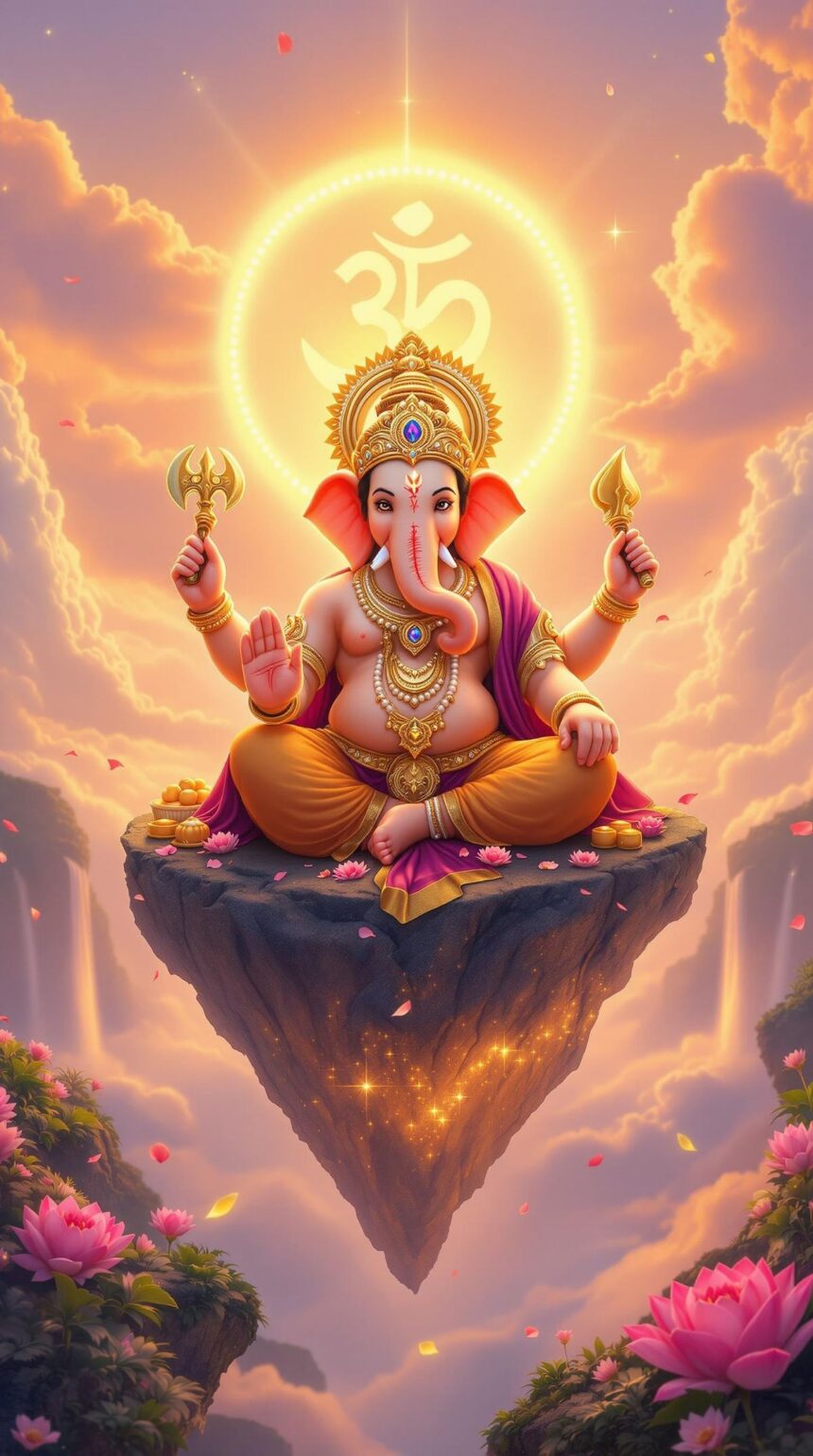8 Powerful Facts About Lord Ganesha That Will Transform Your Life
Lord Ganesha, the elephant-headed god, is one of the most revered and beloved deities in Hinduism. Known as Vighnaharta (remover of obstacles), Ganapati, and the Lord of Wisdom, Ganesha is worshiped at the beginning of new ventures, religious ceremonies, and important life events. His iconography, symbolism, and stories inspire wisdom, prosperity, courage, and resilience, making him central to spiritual and cultural life in India. This article delves into his history, fascinating facts, timeline, significance, FAQs, daily life impact, and societal importance in a detailed, human-friendly way.
Ganesha
| Characteristics : | Knowledge, Eradicator of obstacles. |
| Other Names : | Ganapati, Gajanana, Vinayaka, Vighneshawar, Pillaiyar |
| Principal Scriptures : | Ganesha Purana, Mudgala Purana and Ganapati Atharvashirsa |
| Consort : | Riddhi (affluence) Buddhi (knowledge) Siddhi (perfection) |
| Vahana (Vehicle) : | Mouse |
| Mula Mantra : | Om Gan Ganpatye Namah |
History of Lord Ganesha
Lord Ganesha’s origins and worship have evolved over thousands of years, reflected in Vedic texts, Puranas, and temple traditions:
Birth and Parentage: Ganesha is the son of Lord Shiva and Goddess Parvati. According to popular legends, he was created by Parvati from clay or sandalwood paste and brought to life to guard her while bathing.
The Elephant Head Story: When Shiva, unaware of Ganesha’s identity, beheaded him, he later restored him by placing an elephant head, giving Ganesha his distinctive form.
Vedic References: Though primarily detailed in Puranas like Shiva Purana, Ganesha Purana, and Mudgala Purana, early references appear in Vedic texts as a deity of intellect and remover of obstacles.
Ganesha in Iconography: Depicted with an elephant head, large belly, four arms, and holding various symbolic objects, each representing wisdom, strength, abundance, and spirituality.
Cultural Integration: Worship of Ganesha became widespread from ancient India through medieval temples, festivals, and global devotional practices.
Modern Relevance: Today, Ganesha is universally worshiped by Hindus and spiritual seekers, symbolizing prosperity, wisdom, and auspicious beginnings.
Interesting Facts About Lord Ganesha
Remover of Obstacles: Known as Vighnaharta, he clears both spiritual and material challenges.
Lord of Wisdom: Ganesha is the patron of intellect, learning, and education, worshiped by students and scholars.
Symbol of Prosperity: Represents abundance, fortune, and success, often invoked at the start of business ventures, marriages, or festivals.
Unique Appearance: The elephant head symbolizes wisdom, strength, and perception, while his large belly represents contentment and generosity.
Global Celebrations: Ganesh Chaturthi, his main festival, is celebrated worldwide, blending religious devotion and cultural celebration.
Spiritual Guide: His stories teach humility, patience, problem-solving, and resilience.
Vehicle and Companions: The mouse as his vahana symbolizes intelligence and the ability to overcome ego and obstacles, showing that even the small can conquer the mighty.
Cultural Influence: Inspires art, literature, music, and dance, influencing Hindu rituals and global spiritual practices.
Timeline of Lord Ganesha’s Worship
Ancient Period (c. 1st–5th Century CE): Earliest images and inscriptions appear in Gupta and post-Gupta era temples.
Medieval Period (c. 8th–15th Century): Widespread temple constructions and Ganesh Chaturthi celebrations become prominent in Maharashtra and South India.
Colonial Period: Community Ganesh festivals grow as social and cultural events, blending religion and regional pride.
Modern Era: Ganesh Chaturthi is celebrated globally, with public installations, devotional music, and spiritual gatherings.
Significance of Lord Ganesha
Lord Ganesha holds spiritual, cultural, and societal importance:
Spiritual Symbol: Embodies wisdom, insight, and spiritual guidance, helping devotees overcome internal and external obstacles.
Initiation of Rituals: Worshiped before any auspicious ceremony, ensuring success, protection, and prosperity.
Moral Guidance: Teaches humility, resilience, and ethical conduct.
Cultural Influence: Central to festivals, art, literature, and educational practices, inspiring creativity and devotion.
Role Model: Encourages problem-solving, patience, and emotional balance in life.
Community Cohesion: Festivals and worship bring families, communities, and society together.
Global Spiritual Impact: Ganesha is revered in Buddhist and Jain traditions and inspires spiritual movements worldwide.
FAQs About Lord Ganesha
Q1: Who is Lord Ganesha?
A1: Ganesha is the elephant-headed god of wisdom, prosperity, and remover of obstacles, worshiped before all auspicious beginnings.
Q2: Why does Ganesha have an elephant head?
A2: After being accidentally beheaded by Shiva, Parvati’s son was restored to life with an elephant head, symbolizing wisdom, perception, and strength.
Q3: What is Ganesh Chaturthi?
A3: Ganesh Chaturthi celebrates Ganesha’s birth with pujas, processions, community celebrations, and cultural performances.
Q4: How does Ganesha help in daily life?
A4: He provides guidance, clarity, emotional strength, and protection, helping devotees overcome obstacles and achieve success.
Q5: How is Ganesha worshiped?
A5: Through pujas, chanting mantras like ‘Om Gan Ganapataye Namah’, offering sweets (modaks), and participating in community celebrations.
Impact on Daily Life
Lord Ganesha’s teachings and blessings influence daily life in practical and spiritual ways:
Problem Solving: Inspires patience and creative solutions to challenges.
Academic and Professional Success: Students and professionals seek his blessings for knowledge, wisdom, and career achievements.
Moral and Ethical Living: Guides devotees to live with humility, patience, and kindness.
Cultural Participation: Engages communities in Ganesh festivals, arts, and devotional music, preserving traditions.
Personal Growth: Promotes emotional balance, resilience, and spiritual awareness.
Observance and Wishing
Ganesh Chaturthi: Main festival celebrated with pujas, community gatherings, cultural performances, and immersion ceremonies, seeking prosperity and removal of obstacles.
Daily Worship: Devotees recite Ganesha mantras, offer prayers, and perform rituals for wisdom, protection, and blessings in life.
Wishing: Seek his blessings for success, knowledge, health, and removal of hurdles.
Community Participation: Festivals foster unity, cultural engagement, and spiritual practice across society.
Conclusion: Why Lord Ganesha Matters
Lord Ganesha is not merely a deity; he embodies wisdom, problem-solving, creativity, and spiritual guidance. His stories and symbolism teach resilience, humility, patience, and devotion, impacting personal growth and societal development.
On a societal level, Ganesha worship promotes community unity, cultural preservation, and devotional practices, inspiring people to overcome challenges and achieve success in ethical and meaningful ways. By embracing the teachings of Ganesha, individuals cultivate clarity of thought, emotional strength, creativity, and moral integrity, while society thrives on shared spiritual values and collective cultural identity.
Quick Recap: 8 Powerful Facts About Lord Ganesha
Remover of obstacles (Vighnaharta).
Lord of wisdom, intellect, and learning.
Symbol of prosperity, abundance, and success.
Elephant head represents wisdom and perception.
Mouse vahana symbolizes humility and intelligence.
Global celebration through Ganesh Chaturthi and art.
Spiritual guide for patience, resilience, and problem-solving.
Cultural icon inspiring festivals, music, literature, and devotion.








